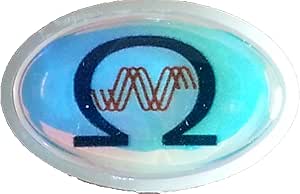If you reside in an apartment or a house or simply want to keep your home free of electromagnetic fields, there are a number options to limit your exposure. One of the most straightforward is to limit your electronic device use. You can also turn to EMF block paint to prevent EMF radiation from entering your house. Another way to shield your home from EMF radiations is to use an RF shielding cover. It is a type made of net which contains EMF shielding. Visit this website 's used to prevent EMFs from entering a room. Another option is to get your house equipped with an enclosure that is conductive. These devices are called Faraday cages.

A number of studies have proven studies have shown that the nonionizing EMF produces antiproliferative properties in HCC cells. The mechanism behind AM RF EMF's anticancer activity in vitro is believed to be based on the downregulation of cancer stem cells. This could be the reason for the long-term response seen in certain patients suffering from advanced HCC. However, the reason behind AM EMF's effects on patients with cancer is not yet clear.
Effects of AM electromagnetic fields (RFEM) on HCC tumor growth in vivo was studied in mice. The tumors were divided into three groups. One group did not have exposure RF EMF. Another group of participants was subjected to RF EMF at a frequency that is similar to that used in humans. In the third, they were subjected to RF EMF at HCC-specific modulation frequencies. The impact of HCCMF on the tumours was assessed against the effect of RCF. The results showed that the tumours treated with HCCMF showed significant shrinkage. However, tumours treated with RCF didn't show evidence of tumour shrinkage.
The mechanism of cancer-specific AM RF EMF might be driven by the fact that tumor cells require Cav3*2 type voltage calcium channels for proliferation and down-regulation. AM RF EMF's antiproliferative effects upon HCC cells is mediated by CACNA1H, a protein that regulates the Ca2+ influx specific to tumors. The results suggest that CACNA1H could have wider implications in the diagnosis and treatment of various cancers.
https://k12.instructure.com/eportfolios/372604/Home/Details_of_Emf_Blocking_Radiation_2 of the controls were never exposed RF EMF, and were fed a normal mouse diet. The tumors of HCCMF HCCMF group were injected with Huh7 cells when they were 5 to 7 weeks old. The tumors were then killed after they had a high burden.
Check out here in the three groups also displayed distinct growth curves. The HCCMF-treated tumors showed a significant decrease in size of the tumor after 8 weeks. However, the tumors that were treated using RCF showed no signs of shrinkage. The difference was highly significant. The tumours treated with RCF were able to show necrosis, which is typical in tumors that have been exposed to RCF. It is possible that the necrosis is caused by the lack of oxygen in larger tumours.
In conclusion, the findings suggest an AM-RF EMF exhibits anticancer effects in vitro and in vivo. Numerous studies have demonstrated that AM RF EMF produces measurable shrinkage of tumors within HCC patients. The possibility is that the AM EMF triggers these effects because of CACNA1H which is a protein involved in the process of tissue-specific Ca2+ influx. Furthermore, AM RF EMF may cause a lasting influence on the growth of HCC tumors in living tissue.
